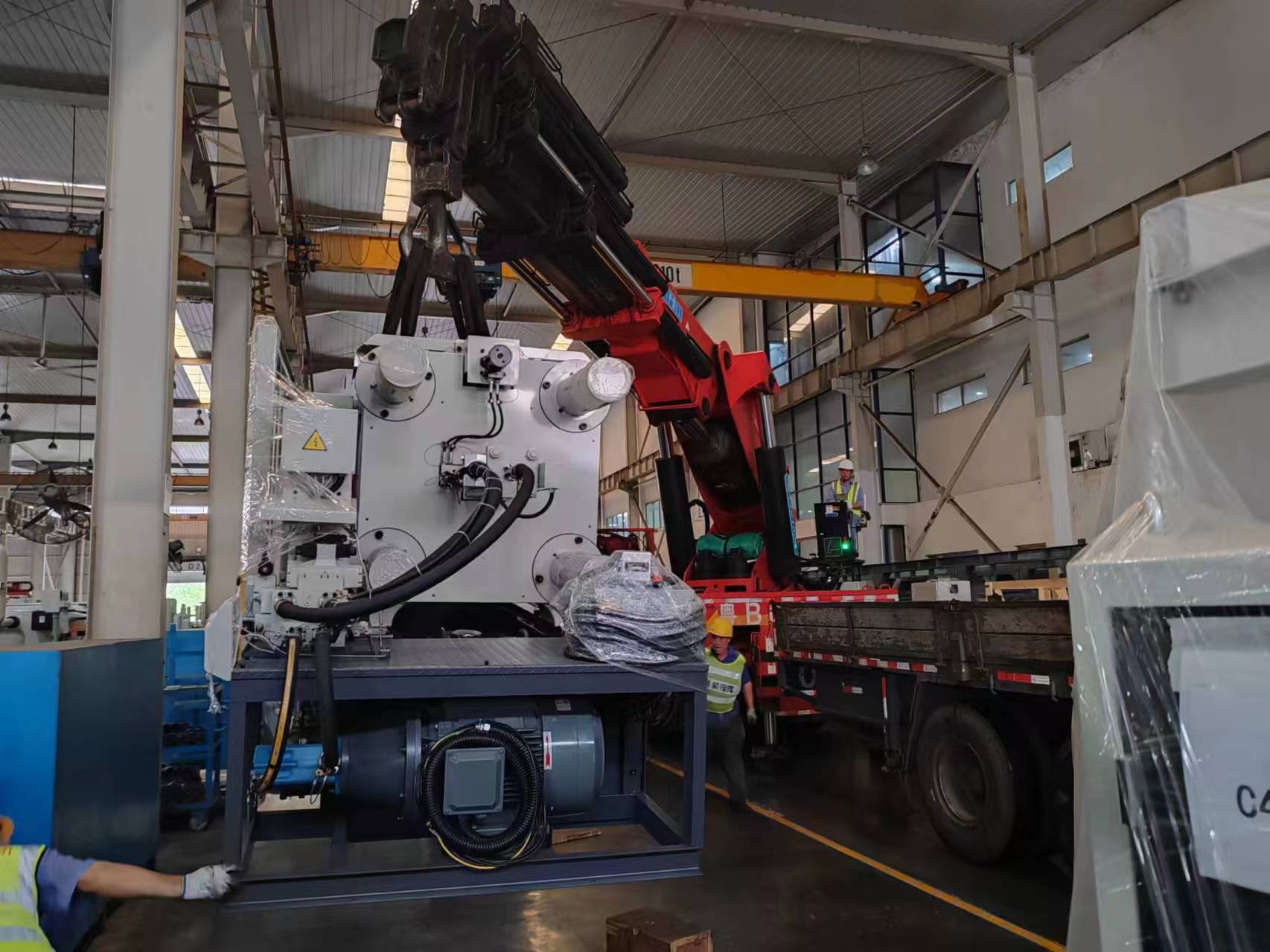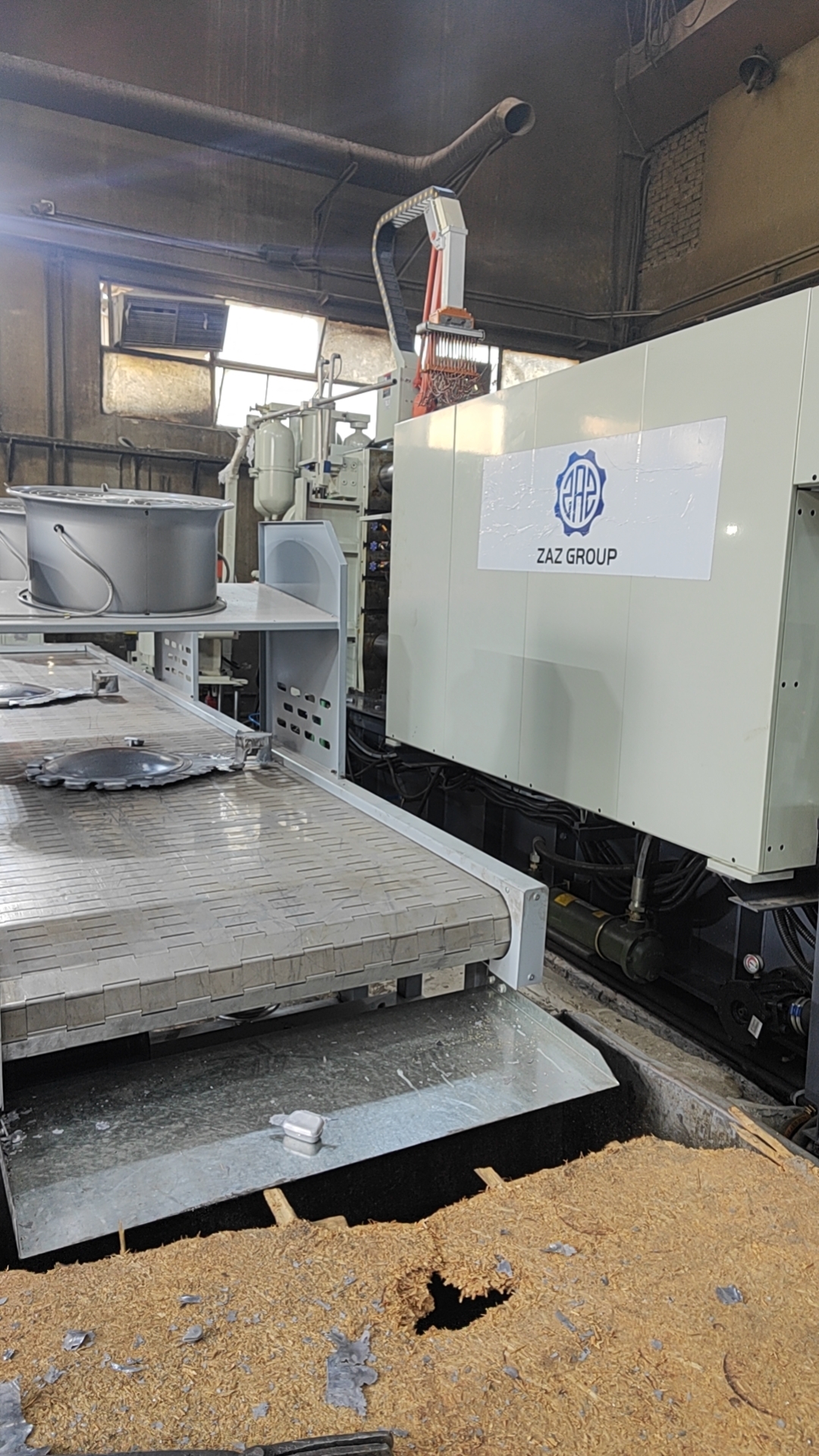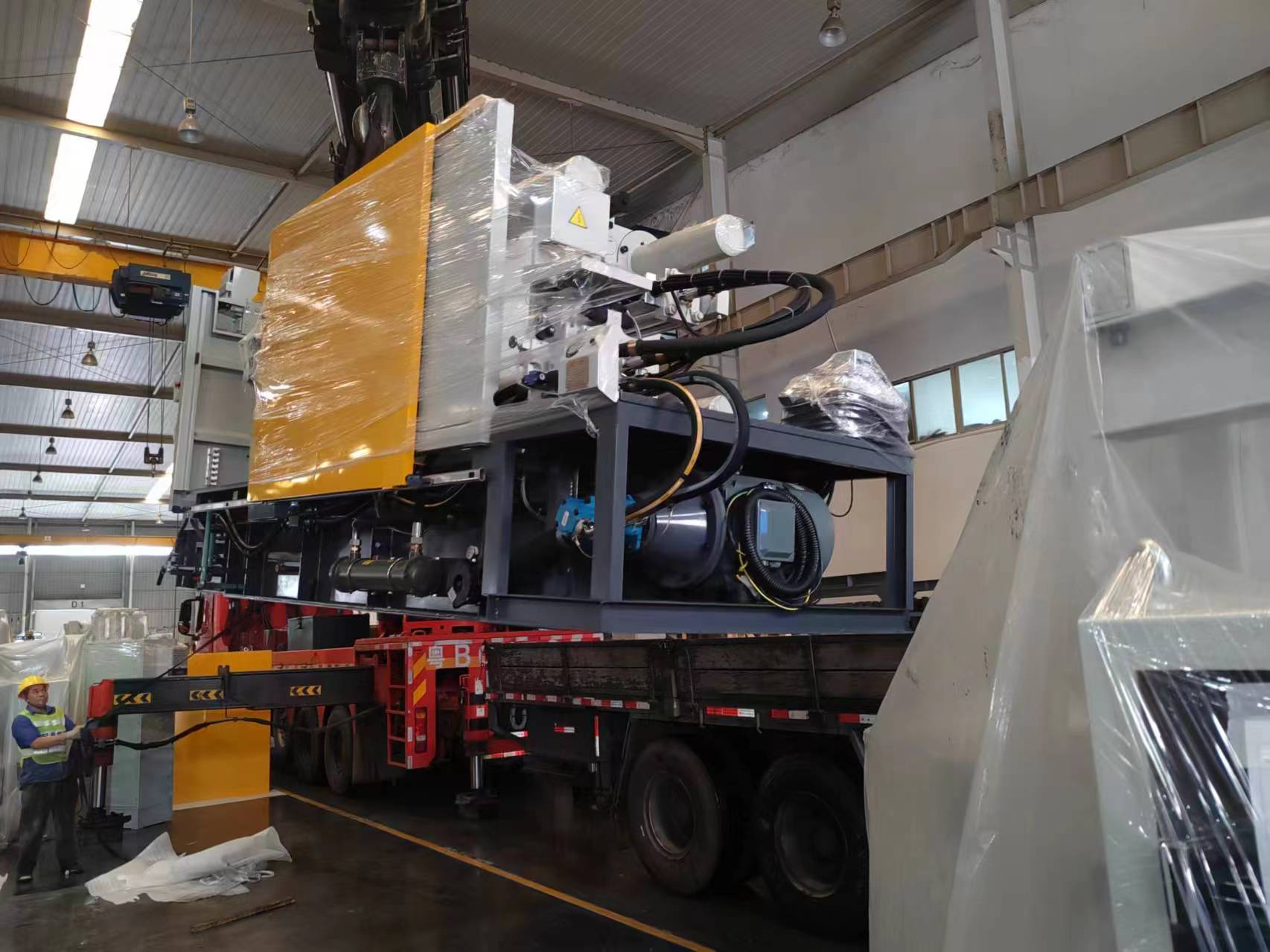Turning Parts in Monel
LK Die Casting Machine / 2024-09-10 09:01:09
2024-09-10 by Cherry
Turning Parts in Monel and die-casting machines
Monel alloy is a high-strength, corrosion-resistant
nickel-copper alloy widely used in aerospace, petrochemical,
shipbuilding, and other fields that require corrosion
resistance and high strength.

Although Monel alloy is not commonly used in die casting,
it is very important for turning and precision machining,
especially for high-precision requirements for some parts.
This article will explore the relationship between turning
parts in Monel and die-casting machines to help you
understand their synergy in the manufacturing industry.
Introduction to Monel alloy
Monel alloy is a special alloy mainly composed of nickel
(about 63%-70%) and copper (about 30%-35%), with excellent
corrosion resistance and high strength.
Its corrosion resistance is particularly suitable for
handling harsh environments such as acid, alkali, and
seawater, which makes it widely used in marine engineering,
chemical equipment, valves, and pumps.
In addition, Monel alloy also has good heat resistance
and low magnetism, which enables it to maintain stable
physical properties when used in special environments.

Manufacturing of Turning Parts in Monel
Turning Parts in Monel is an alloy material with excellent
properties such as high strength and corrosion resistance.
Turning is one of the common processes for machining monel
alloy.
Its turned parts are parts with specific shapes and dimensional
accuracy obtained by turning monel alloy raw materials.
The hardness and strength of this alloy require the use of
hard tool materials, such as tungsten carbide tools, to
ensure a good surface finish during machining.
Turning Parts in Monel are often used to manufacture
high-precision, corrosion-resistant parts such as pump shafts,
valves, key components of aerospace, and other marine or
chemical equipment.
Due to the difficulty of machining monel alloy, the cutting
force and heat during machining are high, so the requirements
for tool life is also more stringent. Coolant is usually
used during the turning process to reduce tool wear and
ensure the surface quality of the workpiece.

Overview of Die Casting Machine
A die-casting machine is a device used for metal die-casting
and is widely used to produce various metal parts, especially
those that require high precision and complex geometry.
Die casting machines use high pressure to quickly shape by
injecting molten metal into a mold. This process is particularly
suitable for the production of light metal products such as
aluminum alloys, zinc alloys, and magnesium alloys.
There are two main types of die-casting machines: hot chamber
die-casting machines and cold chamber die-casting machines.
Hot chamber die-casting machines are mainly used for zinc
alloys and magnesium alloys, while cold chamber die-casting
machines are more used for the forming of aluminum alloys and
copper alloys.
Regardless of the type of die-casting machine, its core
function is to ensure the accuracy and consistency of the
product while quickly producing complex parts.
The relationship between Turning Parts in Monel and
die-casting machines
Although Monel alloy is not suitable for traditional die-casting
processes due to its high melting point and poor fluidity,
there is still some connection between the two in some
high-demand mechanical equipment and specific parts.
Turning Parts in Monel and die-casting parts usually appear
in the same set of equipment, which needs to have the characteristics
of corrosion resistance, high-temperature resistance, and
precision manufacturing at the same time.
For Monel alloy, die casting machines provide it with an
efficient way to form. Die-casting machines can play a role
when we want to produce complex-shaped Monel alloy parts.
Through the die-casting process, Monel alloy parts with
complex shapes and high dimensional accuracy can be mass-produced
in a short time.
These parts can become high-quality Turning Parts in Monel
after subsequent turning and other processing.
Application of mixed parts
In some high-end equipment, Turning Parts in Monel and
die-cast parts may be used in combination. For example,
some parts of the die-casting machine can be made of
corrosion-resistant Monel alloy, while other lighter parts
are die-casted by aluminum or zinc alloy.
This mixed-use method not only improves the durability of
the equipment but also ensures the lightweight and strength
of the overall equipment.
Requirement for tools and accessories
Although the die-casting machine itself does not use Monel
alloy to produce parts, Turning Parts in Monel can be
used as important tools or accessories in the process of producing
high-precision parts.
For example, in some specific cases, the parts used for clamping
or supporting need to have extremely high corrosion resistance
and strength and Monel alloy turning parts become an ideal
choice.
Components of precision equipment
When die-casting machines are used to mass-produce complex
parts, they need to be equipped with high-precision turning
parts. These turning parts can be made of monel alloy to
improve their durability and reliability in harsh production
environments. Especially in high-end fields such as the
chemical industry and aerospace, the combination of monel
alloy turning parts and die-casting parts can meet strict
corrosion resistance and high strength requirements.
In actual production, the performance parameters of the
die-casting machine has a direct impact on the quality
of monel alloy die-casting parts. For example, the clamping
force of the die-casting machine determines the pressure
that the mold can withstand, which in turn affects the
density and dimensional stability of the die-casting parts.
If the clamping force is insufficient, the mold may expand
during the high-pressure die-casting process, resulting
in excessive dimensional deviation of the die-casting parts,
and even defects such as flash, which will bring difficulties
to the subsequent turning process and affect the quality
of Turning Parts in Monel.
The injection speed of the die-casting machine is also a
key factor. The appropriate injection speed can ensure that
the monel alloy liquid flows evenly in the mold cavity to
avoid defects such as cold shuts and insufficient pouring.
If the injection speed is too slow, the temperature of
the alloy liquid drops too fast during the flow process,
which is prone to cold shut; if the injection speed is too
fast, it may cause problems such as air entrainment.
These defects will be exposed in the subsequent turning
process, reducing the yield rate of monel alloy-turned
parts.
At the same time, the design and quality of the mold are
also closely related to the die-casting machine and Turning
Parts in Monel. High-quality molds can better shape
monel alloy parts under the action of the die-casting
machine, reduce the allowance of subsequent turning processing,
and improve production efficiency.
Moreover, whether the cooling system design of the mold
is reasonable or not will affect the cooling speed of monel
alloy die-casting parts, and then affect its internal structure
and mechanical properties.
These properties will affect the wear of the tool, processing
accuracy and other aspects during the turning process.
From a cost perspective, using a die-casting machine to
produce monel alloy parts can reduce production costs.
Although the equipment investment and mold cost of the
die-casting machine are high, since the die-casting process
can achieve mass production and reduce material waste,
the cost allocated to each part will be relatively low in
the case of large-scale production.
The subsequent turning process mainly adjusts the precision
and improves the surface quality of the die-casting parts.
Compared with directly processing the turned parts from
raw materials, the overall cost is effectively controlled.
In terms of process optimization, the combination of die-casting
machines and turning processes need to be continuously explored
and improved.
For example, according to the characteristics of Monel alloy,
the process parameters of the die-casting machine are adjusted,
and the appropriate die-casting temperature and pressure
are selected to obtain the best quality of die-casting parts.
At the same time, during the turning process, according to
the structural characteristics and precision requirements
of the die-casting parts, the appropriate tools, cutting
parameters, etc. are selected to improve the turning efficiency
and quality.
Future Outlook
With the continuous advancement of materials science and
manufacturing technology, the synergy between Monel alloy
turned parts and die-casting machines will be further
expanded.
Although Monel alloy is currently mainly used
for the processing of high-precision parts such as turned
parts, it is possible to improve the alloy composition and
die-casting process in the future to make it play a role
in a wider range of applications.
Especially in the fields of aerospace, medical equipment,
etc., the combination of die-casting technology and high-performance
alloys will provide more possibilities for high-end manufacturing.
In addition, the technological progress of die-casting machines
will also promote the application of more high-performance
materials. As the precision of die-casting machines in pressure
control, temperature regulation, etc. increases, die-casting
processes suitable for high-melting-point materials such
as monel alloy may appear in the future.
This will further expand the application range of monel alloy,
especially in industrial fields that require extremely high
precision and corrosion resistance.
In general, monel alloy turning parts and die-casting machines
complement each other in industrial manufacturing.
Die-casting machines provide an efficient way to form monel
alloy parts while turning processes further improve the
precision and optimize the quality of die-casting parts.
The organic combination of the two provides a strong
guarantee for the production of high-quality monel alloy
parts and promotes the development of related industries.
In today's industrial manufacturing environment that pursues
high precision, high efficiency, and high quality, the significance
of this combination is becoming more and more prominent, laying
a solid foundation for meeting various complex industrial needs.
Conclusion
Although monel alloy turning parts and die-casting machines
seem independent in traditional manufacturing, the relationship
between the two is becoming closer in specific high-end
applications.
The unique properties of monel alloy make it an important
component of die-casting machines and their production
equipment, while the die-casting process provides a more efficient
production method for the manufacturing industry.
In the future, with the continuous innovation of materials and
process technology, the combination of monel alloy and die
casting technology will provide more possibilities for precision
manufacturing.
Whether you are concerned about the precision processing of
monel alloy or the efficient production method of die-casting
machine, understanding the synergy between the two is the
key to maintaining competitiveness in modern manufacturing.
I hope this article can help you quickly understand the
connection between them and future development trends.
For more info, you can refer to:
https://www.tiktok.com/@lk_diecastingmachine/video/7405113006880820522
https://www.youtube.com/shorts/JLX410QV_kw
To learn further info about Die Casting Machines,
pls contact LK Die Casting Machine Authorized Official Agent
LK OFFICIAL AGENT OFFICE DCM
LK Die Casting Machine Authorized Official Agent for Egypt(EGY)
Saudi Arabia(ksa)
United Arab Emirates(UAE)
The Islamic Republic of Iran(Iran)
Qatar(QAT)
The State of Kuwait(Kuwait)
The Middle East
Address: 1. Industry Zone, South of Port Said Kebly, Cairo, Egypt
2. EX 14., EASTERN RING ROAD, AI RAYAN DISTRICT,
RIYADH, SAUDI ARABIA
Arabic Website: https://ae.zazdiecasting.com/
English Website: https://www.zazdiecasting.com/
Phone/WhatsApp/Wechat: 0086 13598704163
Mobile: +20 101 304 3317 +20 150 181 8310
Email: jack@zazmae.com ahmedmahmoud@zazmae.com
OTHER CONTENT
-

2024-09-19 14:16:15 LK Cold Chamber Die Casting Machine DCC900 Locking Force: 9000KN Die Height: 400-1000mm Space Between Tie Bars: 930x930mm Shot Weight: 13.5Kg Casting Area Max:2250c㎡
More -

2024-09-19 14:11:06 LK Cold Chamber Die Casting Machine DCC280 Locking Force: 2800KN Die Height: 250-650mm Space Between Tie Bars: 560x560mm Shot Weight: 2.9Kg Casting Area Max:700c㎡
More -

2024-09-19 10:23:07 LK Cold Chamber Die Casting Machine DCC580 Locking Force: 5000KN Die Heigh: 350-850mm Space Between Tie Bars: 760x760mm Shot Weight: 6.9Kg Casting Area Max:1250c㎡
More -

2024-09-19 10:11:20 LK Cold Chamber Die Casting Machine DCC400 Locking Force: 4000KN Die Height: 300-700mm Space Between Tie Bars: 669x669mm Shot Weight: 4.7Kg Casting Area Max:1000c㎡
More

